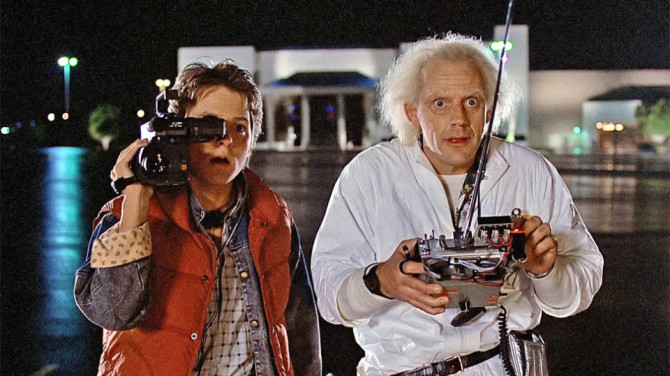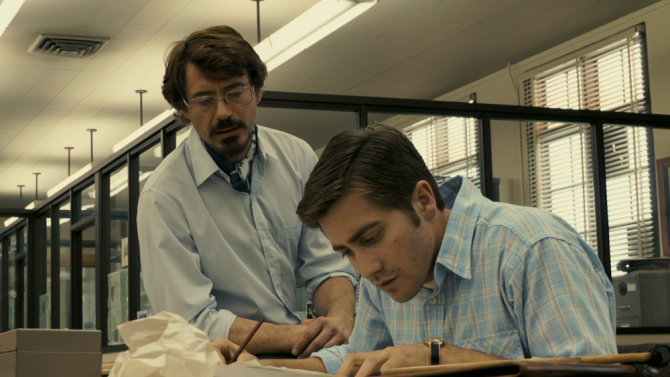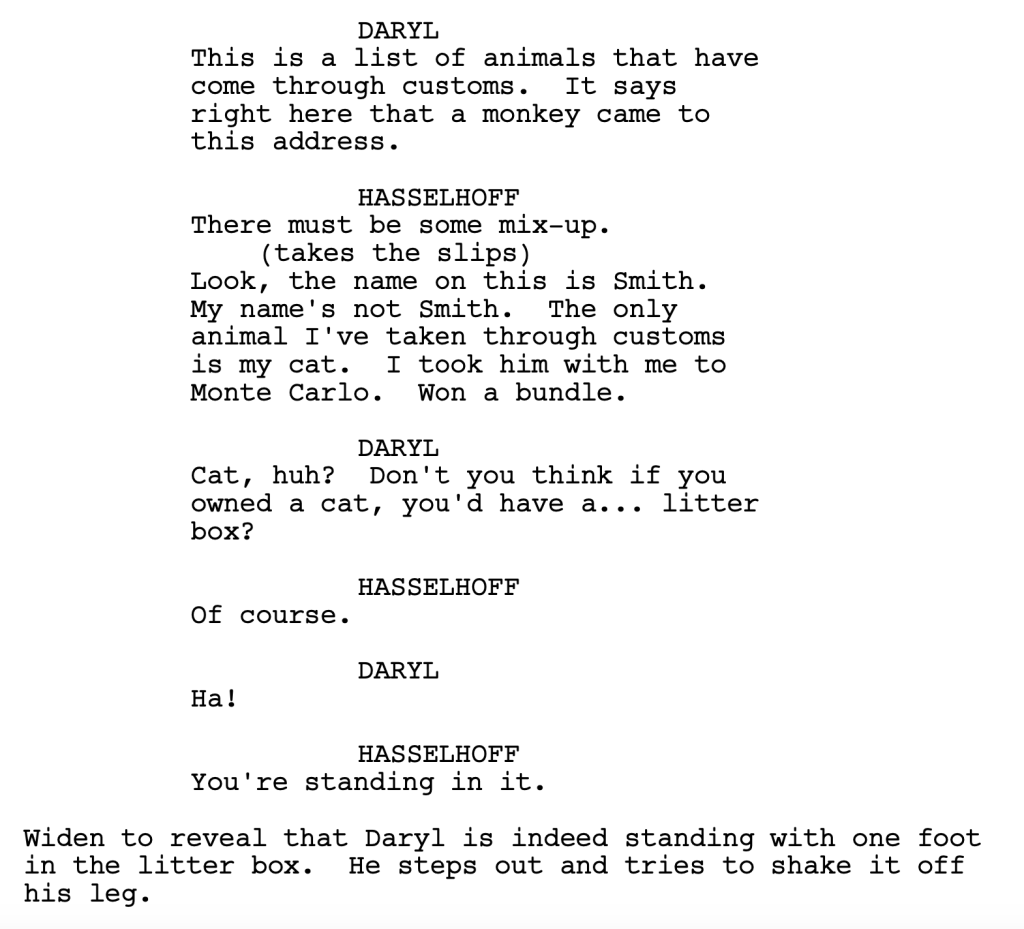Is La Brea the new Lost?
Genre: TV Pilot/Drama/Sci-Fi
Premise: (from IMDB) A massive sinkhole mysteriously opens up in Los Angeles, separating part of a family in an unexplainable primeval world, alongside a disparate group of strangers.
About: Here’s series creator David Applebaum on his high concept show: “The genesis of the idea was just an image of a sinkhole opening in the middle of Los Angeles, and it was just an image that I couldn’t shake. I had never seen a show open that way with something so dramatic and I knew I wanted that to start the story, but didn’t know anything else. But started asking so many questions about why does the sinkhole open? Where does it go? Who are the people that fall in? And then, once you’re starting with those questions, you start to create a world of characters in situations. And then from there, a thousand other things happen, but it really just started with an image.”
Writer: David Applebaum
Details: 60 min
If you’re anything like me – and you probably aren’t but let’s just pretend for a second you are – you miss “Lost.” That show took over my life. For a good five years, everything was built around Wednesday’s at 8 o’clock. I couldn’t get enough of that show. Even when the Lost backlash began and everybody started piling on JJ (“HE ONLY KNOWS HOW TO ASK QUESTIONS! NOT ANSWER THEM!”), I was still Team Lost. Even detractors have to admit that there was something magical about that show. And if you disagree, I have the ultimate argument to prove you wrong.
For the next five years, all anybody did was try to recreate Lost. AND FAILED. Here are just some of the shows that attempted to become “the next Lost.” Flash-Forward, Threshold, V, The Event, Invasion, and the most successful of the failures, Heroes. People think Lost was a bad show? No no no no no. THOSE were bad shows.
It turns out Lost was lightning in a bottle, the perfect TV idea, never to be repeated again.
Or maybe not.
Recently, there’s been a resurgence in trying to recreate Lost, probably because writers who loved the show and were in that target demographic (18-25) when it aired have now become seasoned enough to be able to pitch their own shows. Westworld sort of re-started the “Lost” like formula. A couple of years back there was Manifest, which is now in its final Season on Netflix. And today we get La Brea, which is the most Lost-y show yet. Hell, one of the characters in the pilot literally says, “Or maybe we’re just stuck in an episode of Lost.”
The reason I even gave La Brea a chance at becoming the next Lost is because it has a genuinely cool premise. Let’s take a look at how the pilot shakes out.
Set in Los Angeles, the show starts off with mother, Eve Harris, driving her teenaged kids, Josh and Izzy (who has a prosthetic right leg), across town somewhere, when, all of a sudden, a giant sinkhole appears near La Brea and 3rd Street, swallowing up five square blocks of real estate. Everyone in their cars and inside of buildings fall into the hole of death, including Eve and her son (Izzy and her prosthetic leg are able to outrun the hole).
After the government sets up a perimeter around the hole and begins a clean-up process, Eve’s husband and former Air Force pilot, Gavin, swoops into town. But he’s not just here to hug his daughter with the prosthetic leg. No. You see, several years ago, Gavin had strange visions which got him kicked out of the military. He’s having those visions again, but this time they’re more specific: he can see his ex-wife and a bunch of other people STILL ALIVE.
Cut to a hilly tree-lined rural land and a giant piece of building in the middle of it, along with a bunch of cars and dazed people stumbling around. I’ll save you the mystery. Eve and everyone else on La Brea are a few hundred thousand years in the past, in Los Angeles BEFORE it was Los Angeles. “Those are the Hollywood Hills,” someone points out. The show then sets up a scenario where we will jump back and forth between the past and the present until somebody figures out the mystery of how they ended up here and, hopefully, a way to get home.
Let me just go ahead and say that, so far, I like this show.
At times the writing is juvenile. Frustratingly so. Yet it’s a really cool premise with all sorts of possibilities. I mean, towards the end of the pilot, a group of our time-traveling characters get into a standoff with a saber-tooth tiger. Count me in on that!
But I am oh so worried. This show is already exposing weaknesses and we’re only in the pilot episode. As a means of comparison, Lost didn’t show any cracks until its third season, a full 50 episodes in. Let’s go over a few of these concerns.
The dad had visions – This is extremely concerning. Just going off the odds, what are the chances that someone who has special visionary powers will have a wife that, three years later, will be involved in the single most unique event in the history of humanity? Clearly, the only reason he has this power is that the writers needed a way to bring the husband into the military mix. So they gave him this special power that the military needs. It’s a lazy juvenile coincidental choice that makes me think more choices like it are coming. Although I hope I’m wrong!
The default is melodrama – One of the reasons that cable has usurped the buzzy one-hour drama from networks is because they leaned into more realistic interactions between people. Meanwhile, the network shows are still stuck in melodrama. When your big opening scene turns ultra slow motion while focusing on a prosthetic leg JUST BARELY pushing away from the final crumbling concrete of a giant sinkhole, that’s melodrama. Even Lost knew this. Whenever Jack was saving someone, it felt genuine. It didn’t feel like this over-acted silliness that networks seem to think audiences still like, and which we’re seeing here.
The cars and buildings didn’t survive the fall from the sky but, somehow, all humans did – This is something one of the characters even says. “How are all the cars damaged but we’re okay?” “I don’t know,” another person says. I know they’re going to try and answer this question at some point but it’s clear that the reason the people survived the fall is that they wouldn’t have a show if they didn’t. There is no answer down the road that will adequately explain this, which means they’ll have to construct some nonsensical answer that will ultimately disappoint us.
There are a couple of things going on here. First, the pilot is the foundation for your story. If it’s not solid, the episodes that follow it are going to be even less solid. To make matters worse, each subsequent episode will display the law of diminishing returns. This is why bad shows seem to get worse with every episode. I’m hoping La Brea is an exception to the rule but I’m not optimistic.
Second, a good mystery isn’t built off of a coincidence you need for your story to work. A good mystery is something you create for the sole purpose of the mystery alone. So everyone surviving a fall from 30,000 feet in the air in order for you to have a show isn’t a designed mystery. It’s more of a “paint yourself into a corner” mystery. Polar bears on a tropical island. THAT’S a good mystery because it was specifically designed into the show.
Despite all this, I was into all the stuff that was happening in the pre-historic era. I love the idea of a technology-dependent people being thrust into a past where they’ll be tasked with surviving giant wolves, saber-tooth tigers, cave men, and who the hell knows what else. The power of any show basically comes down to its ideas. Are the ideas imaginative and dramatically compelling? So far, La Brea has that going for it.
I’m just worried they’re going to get in their own way. Will the sloppy conveniences continue? Will the melodrama continue to be laid on too thick? I hope not. Because I would love more than anything to finally be able to watch the next “Lost.”
[ ] What the hell did I just watch?
[ ] wasn’t for me
[x] worth the stream
[ ] impressive
[ ] genius
What I learned: David Applebaum got his first job as a P.A. in the writer’s room of the O.C. Desperate to become a writer on the show, David pushed to move up, eventually becoming a script coordinator (in charge of reading and distributing scripts to everyone on the production and cast) but they wouldn’t give him a writing job. Applebaum said that was his first big lesson learned in Hollywood. “Don’t stay anywhere just because it’s comfortable. Keep your end goal in mind and make choices that help you achieve that goal.” Because they clearly weren’t going to let him write on the O.C., Applebaum quit. He finally got his first paid writing job several years later on a pilot that didn’t get picked up called King’s English. A couple of years after that, he started writing on The Mentalist.
Got a horror script? Good news! Scriptshadow has a screenwriting competition for you. And it’s absolutely free! Send your horror script to me by October 21st and I’ll pick the best five concepts to compete for the Halloween Horror Showdown title, which will take place that very weekend! The winning script will get reviewed here the following Friday, just three days from Halloween!
What: Halloween Horror Showdown
Genre: Horror
When: Entries are due Thursday, October 21st, 11:59 PM Pacific Time
How: Include title, genre, logline, Why We Should Read, and a PDF of your script
Where: carsonreeves3@gmail.com
Can’t wait to see what you horror mavens have cooked up this time!
P.S. I decided not to review Turnpike Jackknife for reasons I’ll get into in the comments. Sorry about the tease!
An exposition trick that’s guaranteed to make you a better screenwriter.
The other day we talked about story ideas so steeped in information, they just aren’t worth writing. Because doing so would amount to 120 straight minutes of exposition dumps. My contention in that review was that these scripts are difficult even for professionals to write, writers who’ve spent countless hours throughout multiple screenplays learning to dispense exposition in a covert and seamless way. To a writer who’s only written a couple of scripts to have to handle that amount of exposition? Forget about it.
So today I thought I’d help those aspiring writers get a little closer to becoming exposition ninjas by teaching them an exposition trick, which I call “Dessert Exposition.” It’s a very simple concept. I want you to imagine that you and I are sitting at a table and I’m telling you about my day. Now, my day today was boring. I didn’t hit a last second shot to win the game. I didn’t shoot any zombies who were trying to bite me. It was one long list of mundane tasks. How long before you think you’ll be bored listening to me? I’m guessing it’s going to be fast.
However, I want you to imagine the same scenario except, this time, I reveal a plate with your favorite dessert on it. Maybe it’s chocolate chip cookies. Maybe it’s salted caramel cheesecake. Maybe it’s Ben and Jerry’s Cherry Garcia ice cream. I’ll let you guys debate the best dessert in the comments. I then say to you, “You can have this. But first I want to tell you about my day.” I know, I’m an evil person. But guess what? Your interest in my day just went up x100. You are going to be much more willing to listen to me drone on about how mad I was that Doordash wouldn’t accept my PayPal account now that you know, when I’m finished, you get to have your favorite dessert.
In today’s exposition lesson…
My day = the exposition.
Dessert = a valued story beat that the reader is looking forward to.
One of the most famous examples of this is the “Doc explains time travel to Marty” scene at the Twin Pines Mall in Back to the Future. There is a ton of important exposition that needs to be conveyed in this scene (car only works on nuclear power, 88 miles per hour, 1.21 gigawatts, the flux capacitor, how to program the time machine). It’s a bit of a screenwriting nightmare, to be honest, having to convey that much information in a single scene.
But, Zemeckis and Gale overcome that by using Dessert Exposition. The dessert, in this case, is seeing the actual time traveling in action. That is the salted caramel cheesecake Zemeckis is holding up on the plate to get all of us effortlessly through the scene. Just to be clear, there are other methods being used to make the exposition work in this scene, but I don’t want to confuse you. The point is, we’re willing to listen to all of this exposition, in large part, because of the dessert at the end of the scene.
Now, what an amateur might’ve done with this scene is place it in, say, Doc’s garage (the one that opens the movie with the Rube Goldberg dog food device) and have Doc explain, with no dessert in sight, how time travel works. I read similar scenes like this all the time in amateur scripts and they rarely work because the exposition gets too technical or too boring, and there’s no reward for getting through it.
The goal with exposition is always the same. You’re trying to make it sound like it’s not exposition at all, but rather just people talking. That’s what dessert exposition does. When people watch that Back to the Future scene, they’re not thinking, “This information is being meticulously doled out to me.” They’re thinking that Doc’s just explaining to Marty how this really cool thing works.
Let’s look at how we can use this tool more practically. Let’s say you’re writing a serial killer script in the vein of Zodiac and you have a pair of detectives working the case. Now, let’s say that Detective A had a father who was also a detective who worked the case 25 years ago and you need a scene where Detective A gives Detective B all this exposition about what his father found in the case, because you’re going to pay some of that exposition off later in the story.
How can we use Dessert Exposition in this scenario?
Well, one way is for Detective A to call Detective B and tell him he “found something big.” Come over right away. So Detective B hurries over to Detective A’s place. Now, what is the amateur screenwriter going to do here? He’s probably going to jump right into what Detective A found, right? That’s not how you do it. You’re ruining a great opportunity to utilize the audience’s anticipation for learning this new info.
So what the pro screenwriter does is he has Detective A sit Detective B down. Detective B says, “Well, what is it? What did you find?!” And Detective A says, “Did I ever tell you what my dad found in Montana?” Which leads to a long exposition-heavy monologue where Detective A lays out all that exposition he needed to lay out about the dad. However, since he first presented the dessert (“I found something big”), we’re willing to sit through it. Maybe even excited to hear it! Because we know we’ll be rewarded in the end. That’s the power of good dessert exposition.
The cool thing about this device is that it’s not limited to exposition. If you want to have a fun playful dialogue scene that doesn’t necessarily move the story forward, you can use dessert exposition to do it. The opening scene in Inglorious Basterds is a good example. Tarantino gives us a valued story beat to look forward to (that Jews are hiding under the house) allowing Hans Landa to riff on all sorts of things, like how he got his nickname, the origin of rats, even how yummy milk is.
To summarize, dessert is the scene’s oxygen. If you try to pull off extensive exposition without it, there’s a high probability the scene will suffocate.
Try it out in your script now. It’s fun!
Is Sprockets the funniest script never made?
Genre: Comedy
Premise: When German nihilist and talk show host, Dieter, learns that his monkey is kidnapped, he must head to America to find him.
About: One of the most infamous projects never made, “Sprockets” was notoriously days from production when Mike Myers pulled out of the project (and a 20 million dollar payday). His problem, according to lore, was that he didn’t think the script was ready. More specifically, it is said that he felt his character, Dieter, was too passive. At this time, Mike Myers was one of the biggest comedy forces in the world. The project falling apart sent shockwaves through the industry. Rumor is that, in order to not get sued into an economic black hole, Myers was forced to make The Cat In The Hat for Universal as a make-good.
Writers: Mike Myers, Michael McCullers, and Jack Handey
Details: about 125 pages – written in 1999
Readability: Fast
Some have called this the funniest script never made.
I have read the script and I have two responses to that:
1) that may be true… but it also may not be… And b) don’t touch my monkey.
Nihilist German, Dieter, who believes that happiness is a worldwide sham, has the number one show in Germany, a talk show called Sprockets where he invites on strange German guests and dances with them. However, all is not rosy on Sprockets. His monkey and co-host, Klaus, hates him. And to make matters worse, Klaus is the only reason anyone watches his show.
So when Klaus disappears one day, it is a mad scramble on the Sprockets set since everyone knows, without Klaus, there is no Sprockets. Dieter soon receives a call from a scrambled voice saying unless he pays the titanic sum of $50,000, his monkey will be murdered. The kidnapper also sends a proof-of-life e-mail with with a picture of Klaus… which clearly shows the Hollywood sign in the background.
Klaus immediately heads to Los Angeles where he starts off by hiring a professional monkey finder named Daryl (Will Ferrell). Daryl ensures Dieter that while he’s never actually been successful at finding a monkey, he’s the best in the business.
Their primary target is David Hasselhoff, who’s somewhat of a rival to Dieter. Ever since Klaus stopped appearing on Sprockets, Baywatch has moved ahead of Sprockets as the top rated show in Germany. I mean, of course it has to be Hasselhoff, right? But when Dieter crashes the set of Baywatch to bust him, Hasselhoff gives him irrefutable proof that he was nowhere near Germany at the time of the kidnapping.
Dieter and Daryl decide that Plan B is to go to the FBI. But since they know the FBI won’t care about a kidnapped monkey, they tell them that Klaus is actually an overly hairy little boy. The FBI sets up a sting operation with a suspicious cabin in the woods tied to Hasselhoff (for which they inform Dieter that the only place they can adequately hide their wire is on his scrotum – a decision that backfires when, while walking to the cabin, Dieter is startled by a deer and pees himself) but when they get to the cabin, the FBI learn that Dieter has been lying this whole time and that Klaus is a monkey.
The FBI immediately arrest Dieter for lying and send him and Daryl to prison surrounded by a forest called “Snake Forest.” The two make a prison break but Daryl is immediately killed by a python. The cops say there’s no way Dieter made it much further and was clearly killed by snakes as well. Cut to Dieter taking a quick nap in the forest, using a coiled up python as a pillow.
Dieter can’t shake the feeling that Hasselhoff is somehow involved and confronts him at his home only to find…. A SECOND HASSELHOFF. This is Maurice Hasselhoff, David’s unknown twin. Maurice has been carefully planning to take over David’s perfect life. But he realized that Sprockets would always be a thorn in his side, competing for the best show in Germany, which is why he decided to kidnap Klaus – to lure Dieter to Los Angeles and kill him. Will Dieter be able to take him down? Maybe with a little dancing? The script is here so you can find out yourself!
I don’t know, man.
I think Mike Myers dropped the ball by not making this.
One of the reasons comedy is so frustrating is because you never truly know if something is funny until you try it out. And sometimes you can talk yourself out of something being funny before you try it. That seems to have happened here. Because this is easily funnier than 90% of the comedies we’ve seen in the past decade. EASILY. And it’s definitely better than any live action movies Michael Myers has made since 2000.
Here are some highlights:
– Dieter reading Nietzsche as a 10 year old boy.
– A flashback after his father died where we pull back to reveal Young Dieter and his mom eating on a coffin, accompanied by Dieter’s voice over, “We could not afford to bury Father so we used his coffin as a table. Mother was always very clever around the house.”
– Dieter on his mom: “I never told my mother I loved her. (beat) And with luck I never will.”
– An American reporter asks Dieter a question: “Dieter, is it true that you and Dick Van Patten, the father from ‘Eight is Enough,’ were once lovers?”
– An early exchange between Dieter and Daryl – DIETER: “I must find Klaus. Tell me everything.” DARYL: “Well, there is a secret society of horrible, despicable degenerates, sort of like a monkey underground. They do things to monkeys you couldn’t even imagine.” DIETER: “What, have sex with them?” DARYL: “Jeez, no! That’s awful. I never would have thought of that!”
– A chat at a Hollywood party with the love interest, Gena – GENA: “Hi. I’m really glad you could make it.” DIETER: “I never miss a decadent expression of bourgeois hyperbole.” GENA: “You mean a party? Do you always have to intellectualize fun?” DIETER: “In Germany, fun is for the elderly and the mentally deficient.”
– While getting a back rub, Dieter remembers Klaus – DIETER: (emotional) “This reminds me of the times Klaus would scratch my back.” DISSOLVE TO CLOSE-UP – A MONKEY’S PAW – Is scratching Dieter. DIETER: “Thank you, Klaus.” PULL BACK to see that Dieter is actually being scratched by one of the little monkey paw back-scratchers, which Klaus himself is holding.
As for the assertion that it wasn’t active enough, I’m not sure that I’m seeing that here. Dieter actively goes to Hollywood. He actively hires a monkey catcher. He actively pursues David Hasselhoff. His choices pretty much drive the entire movie.
I know that another worry they had was that Dieter wasn’t likable enough. Intellectually, I can understand that. He’s a miserable human being who thinks only about death, lol. But comedy screenwriting has a secret weapon when it comes to likability. And that is that, as long as the character is funny, we’ll like him. To use another film from that time as an example – Swingers – Trent (Vince Vaughn) is the world’d biggest asshole. He’s a giant heartless womanizer. But we like him because everything that comes out of his mouth is funny.
Dieter is the same way. Everything he says is funny so I don’t know how we could not like him. But again, I also know that when you’re putting together these giant comedy movies, people freak the hell out about everything – whether it’s not funny enough or stupid or boring or “the main character isn’t active enough.” I don’t think they realized what they had here. Which is something special. Or Mike Myers didn’t realize that.
The most impressive thing about this script is that Dieter is one of the more gimmicky comedy characters in the SNL vault, and yet Sprockets is, for the most part, a fully fleshed out screenplay with quite an intricate plot. Most of the comedy scripts I read are Filler City but I didn’t feel like a single scene in Sprockets needed to be axed. They really thought this through.
Most of these old famous scripts end up being duds. I’ve found that if something’s good, it will find a way to get made. The unique thing about Sprockets is that only one person in the world could play the main character. So it wasn’t like a ton of studio types questioned whether the movie should be made. It was just Mike Myers. Which is why Sprockets is an exception to the rule. It’s an abandoned project that’s actually good. Not only would this have been a comedy classic, but it would’ve birthed an entire vocabulary of one liners into the zeitgeist that we still would’ve been saying today. It very well might’ve been a comedy classic.
Script link: Sprockets
[ ] What the hell did I just read?
[ ] wasn’t for me
[xx] worth the read
[ ] impressive
[ ] genius
What I learned: How to find a flaw for your hero – The one misstep in Sprockets is that they didn’t explore a flaw for Dieter. Even though it was staring them right in the face. People always ask me, what flaw should I give my hero? I tell them, “Listen to your character. He’ll tell you.” What is your character’s identifying characteristic? Dieter’s identifying characteristic is that he doesn’t believe in happiness. Everything he says revolves around that. So that’s your flaw! Thats’s what’s holding him back. They should’ve explored an ending where Dieter was required to see the good in the world – to be happy for once – in order to achieve his goal. Or, because it’s a comedy, they could’ve doubled down at the last second and Dieter insist there is still no such thing as happiness. As long as you establish that as a flaw, the reader has something to look to forward to as far as our main character growing. Will he find happiness or will he continue to live a life of depression?
Genre: True Story/Thriller/Crime
Premise: (from Black List) The incredible true story of the multi-billion dollar Malaysian government corruption scandal which led to the conviction of Prime Minister Najib Razak and almost $5 billion in settlements paid out by Goldman Sachs.
About: This script finished with 10 votes on last year’s Black List. I’ll let Deadline give you some insight: “From her kitchen table, Brown revealed the illegal activity that not only went to fund the lavish, Gatsby-like lifestyle of Jho Low, the young, wildly ambitious Malaysian national of Chinese descent who masterminded the plot — and who is still at large — but also the Malaysian prime minister, his wife, their nine-figure cache of jewels, real estate, clothes, and designer handbags, a $1 billion political slush fund, and even the Oscar-nominated Martin Scorsese-directed The Wolf of Wall Street, which starred Leonardo DiCaprio as Jordan Belfort. Along the way, Goldman Sachs – whose most senior executives in the region were found to be complicit – would be forced to pay over $5 billion in settlements to the US and Malaysian authorities.”
Writer: Scott Conroy
Details: 126 pages
Readability: Medium
Money-money-money-monaaay……. MONNNAAAAY.
Hollywood loves themselves a story about money. About excess. Greed. They absolutely LOVE IT. If you can find a true story with even halfway decent characters that exposes some billion dollar scam or grift, WRITE IT. It’s money in the bank. Your bank this time.
This one is a little hard to summarize but I’m going to give it my best shot. There’s this English blogger named Clare Rewcastle-Brown who grew up in Malaysia and now has a blog that nobody reads exposing their government’s corruption.
Clare soon stumbles upon a Malaysian man named Jho Low who is a board member for a Malaysian financial fund called 1MDB. This is a government fund that has indirect ties to the prime minister, Najib Razak. Jho Low really likes to invest in things using this fund. For example, he invests in an oil company in Saudi Arabia. And a movie production house in Hollywood (the one that produced The Wolf of Wall Street).
Jho Low loves to spend money. At one point, we see him blow 3.6 million dollars on a single blackjack hand. Oh, and he spends 42 million dollars on the original Metropolis movie poster, which he frames and puts in the lobby of his production house! Just hanging out. 42 million bucks there for the taking.
Clare starts writing about this guy and, naturally, the Malaysian government gets upset so they start threatening her, putting unflattering pictures of her online, even getting people to follow her around.
Clare eventually gets contacted by a banker who used to work with Jho and has over 30,000 e-mails from him that expose his crazy spending. Clare is too scared to publish them so she goes to the Wall Street Journal instead and they run the story. All in all, Jho Low spent something like 6 billion dollars. This results in mass chaos in Malaysia and Najib Razak is voted out of office at the next election. The end.
Let’s talk about exposition, shall we.
Actually, let’s talk about all three screenwriting villains: Exposition, setup, and backstory.
These three script malcontents are your mortal enemy. Their purpose, while noble, gets in the way of you being able to do what you want to do, which is tell a story.
I just watched this little sleeper film on Netflix called The Clovehitch Killer. It’s a good movie about a teenager in a religious family who suspects that his father may be a serial killer. You should check it out. What stood out to me about that movie was just how little exposition, setup, and backstory it had. It was pretty much straight storytelling. You didn’t have to trek through any mud to get to the beach.
1MDB, much like yesterday’s Foundation, is jam packed with exposition, setup and backstory. If we’re not meeting the fifteenth member of some rare Malaysian bank, we’re meeting the twentieth fellow billionaire buddy of Jho Low.
I’m going to try and make an analogy here so stay with me. Whenever you buy a board game, it comes with a rule book. Or, at least, it used to. I don’t know what they do now. Maybe some hologram lady explains the rules to you. But if you’ve ever played a board game, you know that nobody wants to sit around and read a long rule book in order to play the game. They just want to play. Which is why most board game rule books are short and simple. The creators of these games know that there’s a tipping point whereby if the extensiveness of the rules outweighs the fun of the game, people just won’t play.
As a screenwriter, you want to think about your potential script in the same way. It comes with a rulebook. That rulebook consists of exposition, setup, and backstory. The thicker that rulebook is, the more challenging it will be to write an entertaining story. And if you have a rulebook as thick as 1MDB’s, it’s almost impossible.
1MDB started out strong because it focused on these things that we were familiar with – glitzy Hollywood stars winning Oscars and partying with rich financier producers. But the second we have to start explaining what 1MDB is, the script becomes more of a documentary than a narrative feature.
I mean I still don’t know how Jho Low is connected to the prime minister, which I thought was the whole point. And here’s where the evils of excess exposition rear their ugly head. The answer may very well be in the script. The writer might be able to tell me the exact page number where they explain how Jho Low is connected to the prime minister. But, you see, human readers aren’t computers. We don’t automatically download everything that’s on the page. When a lot of information comes at us, we’re overwhelmed. You might be explaining something clearly to us but we’re still trying to process the last three pages of dense information we read and, therefore, we’re not present enough to understand the latest information you’re sending our way.
This hurts the script in a myriad of ways, one of which is essential for making these types of stories work. The big financial greed stories need a villain. They need someone – or at least some identifiable entity – we’re infuriated by so we can root for them to get caught. Like the Catholic Church in Spotlight. They were so evil in that story, I was infuriated, which made me want them to get caught. I think that person in 1MDB is supposed to be Jho Low but I never once saw him as an evil presence, explicitly because there was too much information to wade through to understand why he was bad.
I think – I *THINK* – that 1MDB was a government fund and, maybe, Jho Low was one of several people tabbed with investing that money to grow the fund for the Malaysian people? And so for every stupid purchase he made, he was deliberately taking money out of Malaysian peoples’ pockets? I *THINK* that was what was going on.
But, again, because there was so much information to wade through, I was never sure exactly how he was hurting the Malaysian people. So I couldn’t be that upset at him. And therefore I wasn’t that keen on him getting caught. And if I don’t care if your bad guy gets caught, you don’t have a movie.
You see, what Scot Conroy doesn’t realize here, is that the real problem isn’t the Malaysian government. It’s exposition. It’s a story that needed such a big rule book that by the time we were done reading it, we didn’t want to play anymore.
And hence, that is today’s lesson. When you’re contemplating whether to write a script or not, ask yourself how big the rule book needs to be in order to write the story. If it’s too big, think twice about writing the script. It’s not that it can’t be done. As I’ve said here before, you can make any story work. But if you’re not an experienced screenwriter with years upon years of practice on how to distill, hide, and eliminate exposition, you’re fighting an uphill battle. I mean David S. Goyer’s been in the business for 20+ years and even HE was having trouble deciding which information should stay and go in yesterday’s Foundation, leading to a clunky, unclear, pilot. You’d be much better off writing a simple story like The Clovehitch Killer. (P.S. It’s really good! Check it out!)
[ ] What the hell did I just read?
[x] wasn’t for me
[ ] worth the read
[ ] impressive
[ ] genius
What I learned: Outrage Narratives. It’s totally legit to write an outrage narrative (the main thrust of the narrative is that you’re so angry, you have to keep reading to see the bad guy go down). We see how effective outrage is by reading the daily news. However, for outrage narratives to work, you must clearly explain why we need to be so outraged at the villain. 1MDB didn’t do a very good job of that, which is why it landed with a whimper.











